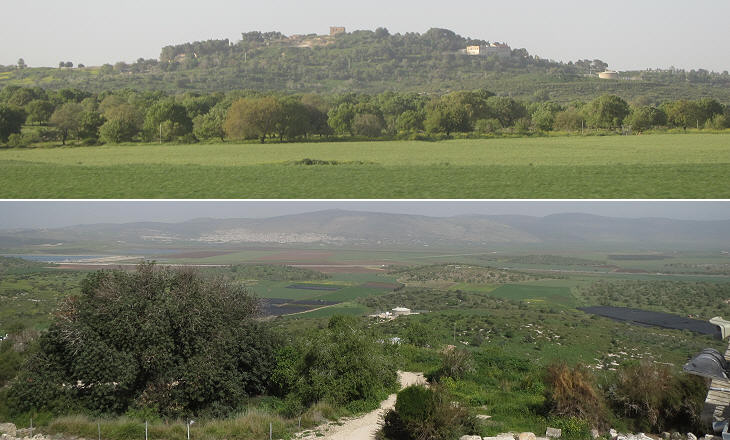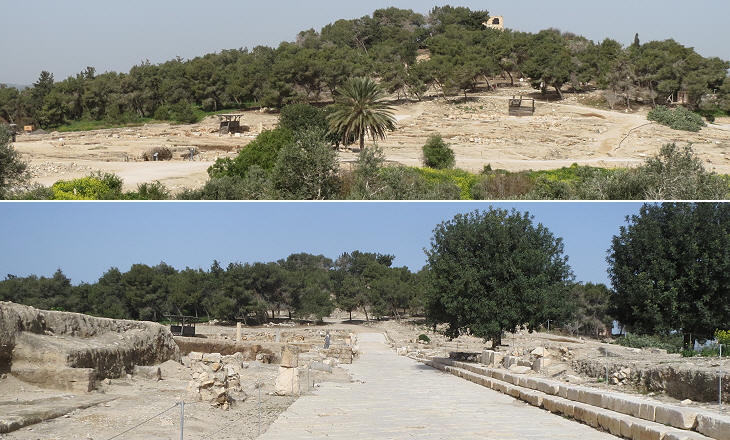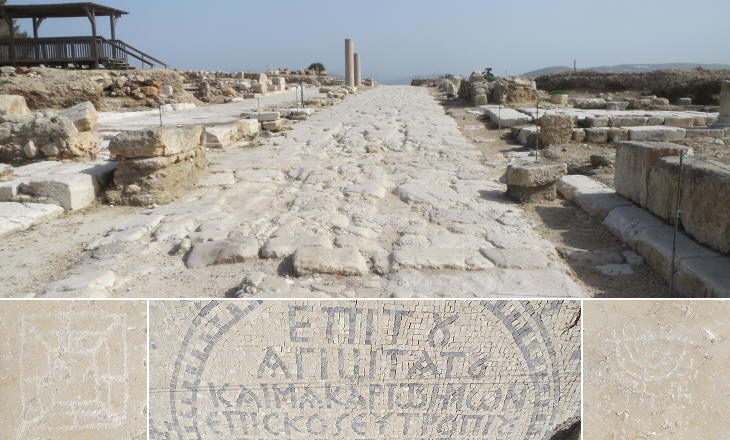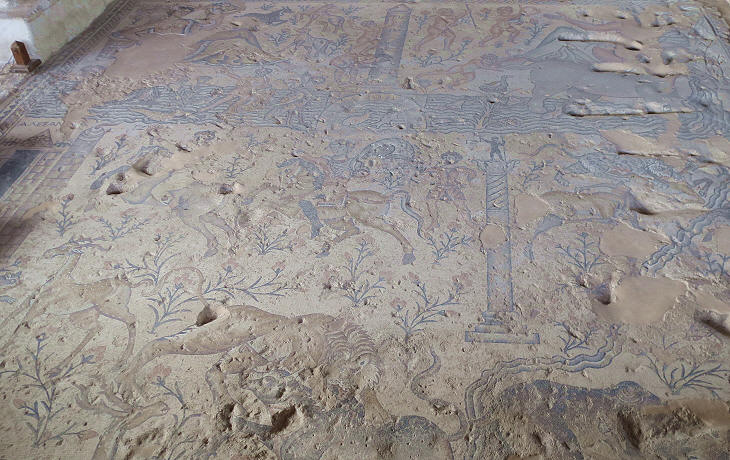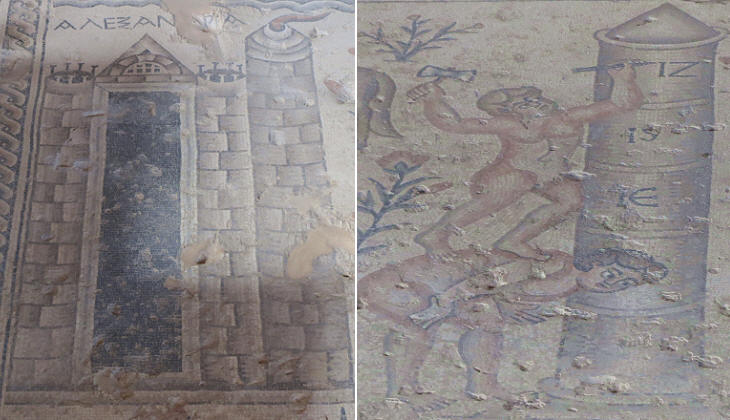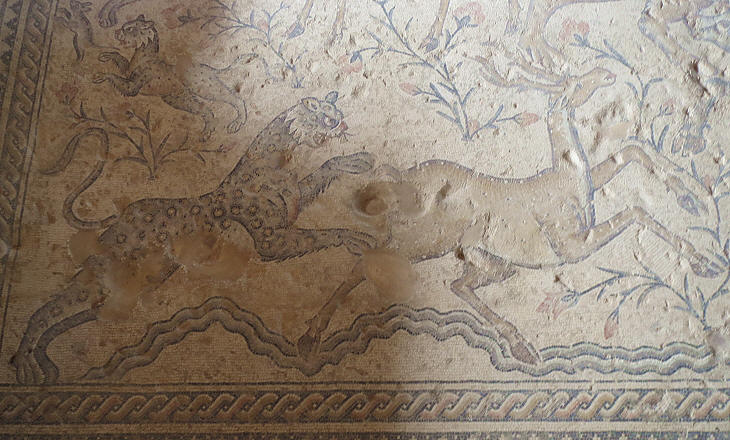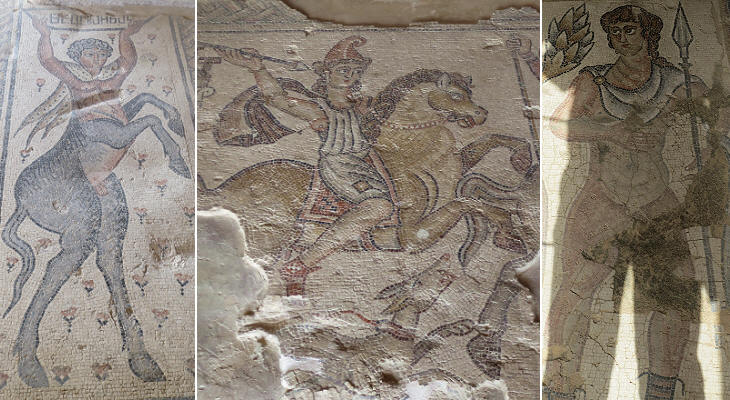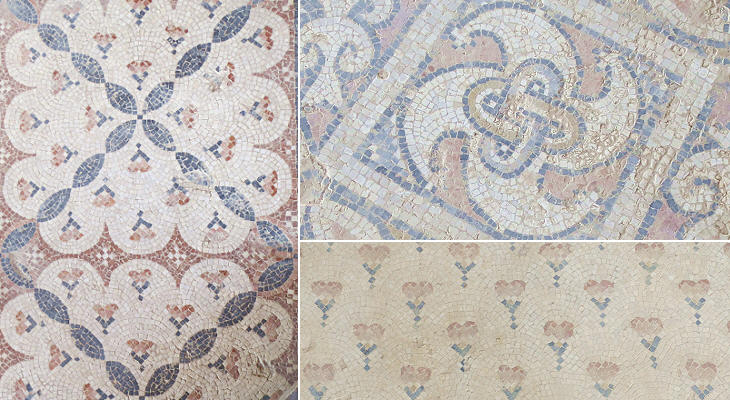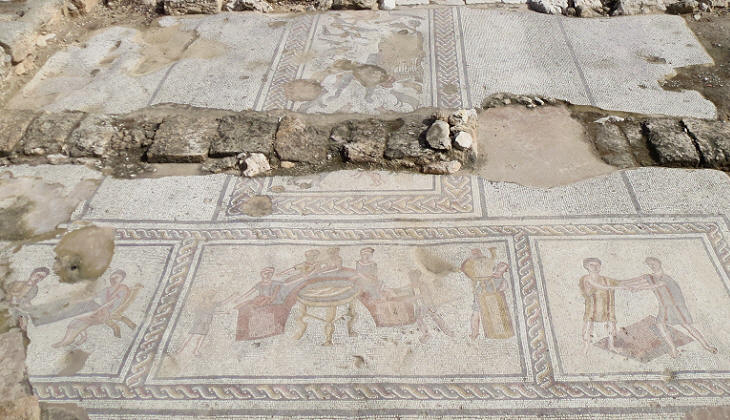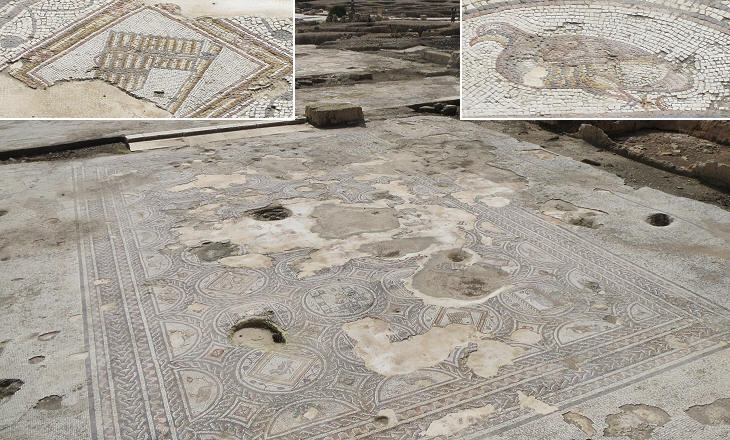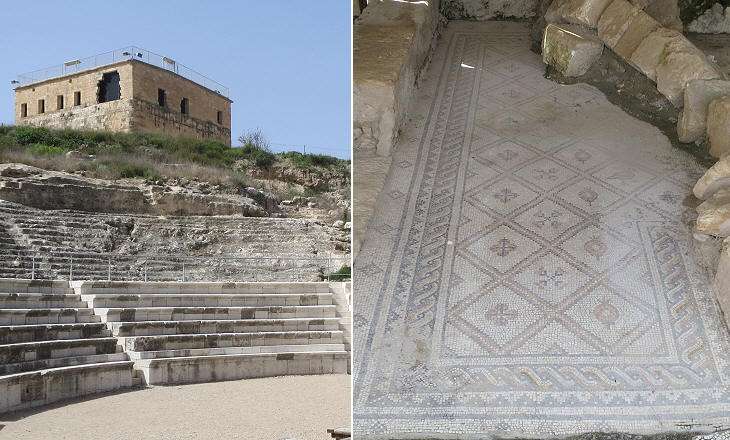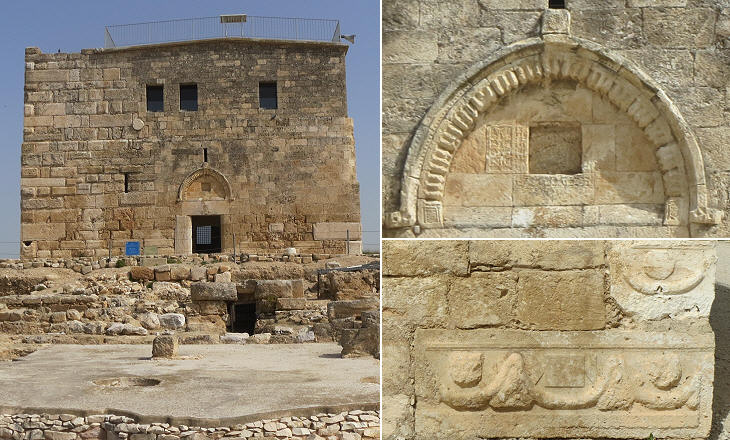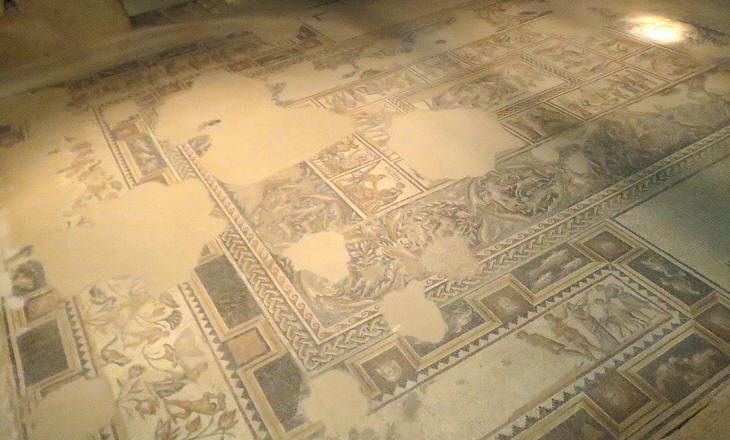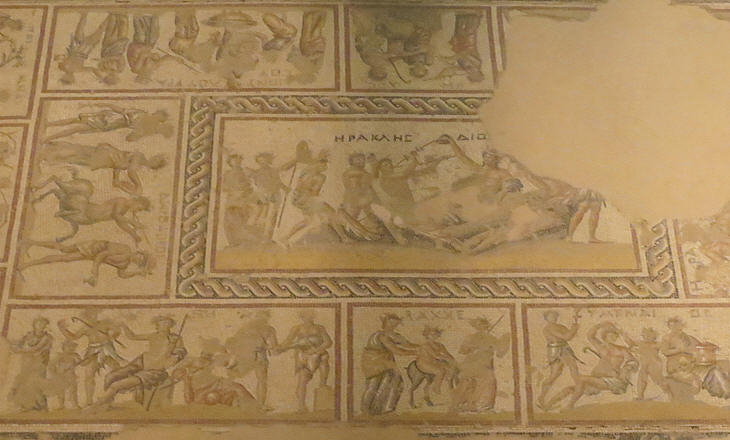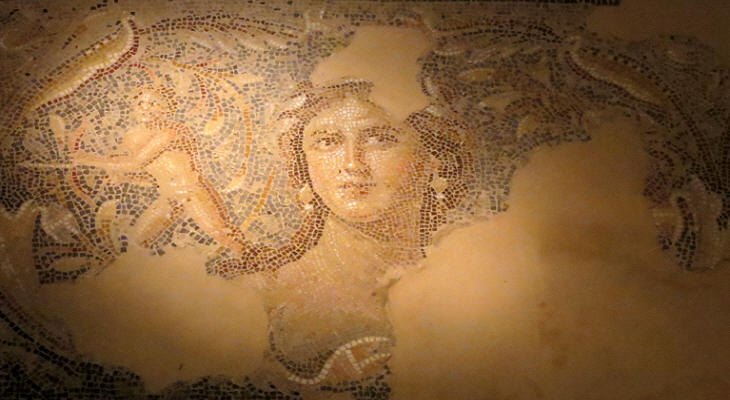  What's New! Detailed Sitemap All images © by Roberto Piperno, owner of the domain. Write to romapip@quipo.it. Text edited by Rosamie Moore. Page added in July 2013. |
 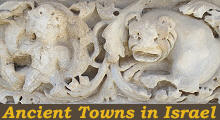 - Diocaesarea or Sepphoris (Zippori) - Diocaesarea or Sepphoris (Zippori)(relief at Scythopolis) To be sure the greatest cities of Galilee o Justus! were Sepphoris and thy country Tiberias. But Sepphoris situated in the very midst of Galilee and having many villages about it and able with ease to have been bold and troublesome to the Romans if they had so pleased, yet did it resolve to continue faithful to those their masters and at the same time excluded me out of their city and prohibited all their citizens from joining with the Jews in the war. Flavius Josephus - The Wars of the Jews - Translation by Samuel Burder Josephus was the leader of the First Jewish Revolt in Galilee and in 67 AD he was captured by Roman general Vespasian who became emperor two years later. Josephus, who had prophesied the event, became an adviser to Titus, Vespasian's son, during the rest of the campaign. He was eventually freed and, consistent with Roman usage, he added the "surname" of his patrons (gens Flavia) to his name. He then wrote several books (in Greek) on the history of the Jews which were meant for a Roman audience, but nonetheless are the main source of information for historians on many events which occurred during the First Jewish Revolt and in the century which preceded it.
The archaeological site of Sepphoris (eventually renamed Diocaesarea) is very conveniently located near a main road and a few miles from Nazareth, which is a "must see" on every tour of Galilee, yet it does not attract many visitors. In a way the site, which retains the finest mosaics of the country, pays a price because in 66 AD the inhabitants of the town sided with the Romans and did not join the rebels in what historians call the First Jewish Revolt. So Sepphoris is not part of the Jewish national identity as much as Masada is, where in 73 AD the last rebels killed themselves when they understood their cause was lost.
We left the village of Sepphoury a little on our left behind a rising ground and learned that as all its inhabitants are Mohammedans the very ruins which remained of the house of St. Anna had been entirely demolished. James Silk Buckingham - Travels in Palestine - 1821. A small Arab village which retained the name of the ancient town stood on the site of the acropolis until 1948 when its inhabitants were evicted and pine trees were planted where the village stood. The very first excavations started in 1931, but not until the 1980s were they resumed and still continue.
Often ancient towns were known by more than one name, but Sepphoris is a special case: Herod Antipas, son of Herod the Great, King of Judea, renamed it Autocratis, Vespasian called it Neronias, but the name was soon dropped because Emperor Nero was deposed by the Senate. Diocaesarea, the new Latin name, indicates that the town had a temple to Zeus as did Diocaesarea (Olba) in Turkey.
In a very simplified way mosaics found in territories of the Roman Empire fall into two categories; those where the subjects are placed inside an overall geometric frame (the majority) and those where they are positioned on a landscape background having references to the River Nile. Galilee is located midway between Egypt and Syria and it retains mosaics of both types.
The overall subject of the mosaic is the Festival of the Nile, a series of ceremonies which took place to celebrate the periodical inundation of Lower Egypt. A boy happily mounted on another one marks the level reached by the water. A similar mosaic can be seen at the Church of the Multiplication of the Loaves and Fishes near Tiberias. Although in Rome the geometric type of mosaic was the norm, a grand Nilotic mosaic can be seen at Palestrina.
Hunting scenes were popular subjects in both types of mosaics: they could involve ferocious beasts such as crocodiles, lions, bears, tigers, panthers, etc. and their fleeing prey such as donkeys, deer, gazelles. etc. But in other scenes the chaser was chased and hunters with their hounds killed the beasts.
The lavish decoration of the House of the Nile Mosaic which is located east of Cardo suggests it was the residence of a high officer. He must have been very Hellenized from a cultural viewpoint because the other rooms were decorated with subjects from the Greek myths such as centaurs, amazons and naked warriors, probably representing popular heroes.
We live in a world where images reach us through a variety of media and yet in the Ancient World images travelled too because there are similarities in the decorative patterns of mosaics which cannot be explained otherwise. You may wish to compare the Solomon's knot shown above (upper right corner) with that found at a synagogue at Sardis in Turkey.
A mosaic of the IIIrd century AD having at its centre Orpheus taming the animals has attracted the attention of Jewish scholars who see a link between him and the biblical image of King David. Orpheus was a preferred subject of mosaics and small sculptures because it allowed the depiction of an entire zoo as you can see in a better preserved mosaic at Philippopolis in Syria. The scene of the dice players appears in a mosaic found at Thysdrus in Tunisia. The people dining are reclining on the typical Roman couches and the two wrestlers are about to engage in a fight which has been defined as Greco-Roman, so the overall content of the mosaic is indication of a very Hellenized culture.
Wealthy Romans showed their hospitality by decorating their reception rooms with a geometric mosaic where items such as edible things or objects related to entertainment were depicted. They are called xenia which meant hospitality in Greek and more generally presents in Latin.
Diocaesarea had a small theatre partly excavated into the slope of the hill and unfortunately already damaged by a silly reconstruction (archaeologists seem to always lose their battle to preserve ancient theatres). In this part of the town excavations are unearthing other mosaics and not far from the theatre a synagogue with a very interesting mosaic was found.
In 313 Emperor Constantine issued the Edict of Tolerance, by which he granted all citizens freedom in the exercise of religion. His son Constantius II favoured the Christians with the aim of achieving religious unity throughout the Empire. This caused frictions with the Jews who did not want to convert. In 351 the Jews of Diocaesarea caught the Roman garrison by surprise and killed many Christians. Eventually the town was seized by a Roman army and its Jewish population was almost exterminated. This caused the decline of Diocaesarea which was struck by an earthquake in 363. The town does not appear in Tabula Peutingeriana, a Vth century map of the roads of the Roman Empire. The town was conquered by the Crusaders in the XIth century. They built a small fortress at its top using materials from ancient buildings. It was eventually turned into a school for the children of the Arab village.
Very near the fortress archaeologists have found a large house which they have named after its main mosaic which portrays the Greek god Dionysus, another common subject of mosaics. Unfortunately the structure which has been built to preserve the mosaic has a lighting system which gives enough light only to a detail of it.
The fact that Dionysus was chosen for decorating so many dining rooms is not due to strong religious feelings, but because he was the inventor of wine and his cult was associated with feasts and enjoyment. Although he was not one of the original twelve Olympian gods he was worshipped all over the Roman Empire. You may wish to see mosaics portraying Dionysus at Antioch, at Paphos (Cyprus) and at Sabratha (Libya).
The detail for which the rest of the mosaic is kept in the dark is no doubt extremely fine, but in the room at the Gaziantep Museum (Turkey) where they show the Zeugma Mona Lisa they give proper light to the other exhibits too. The image used as background for this page shows a detail of the Nile Mosaic. Move to: Introductory page Ancient Synagogues: Introduction, Korazim, Capernaum and Hamat Teverya Ancient Synagogues: Bet Alpha, Diocaesarea and Ein Gedi Caesarea Herodion Mamfis (Mamshit) Masada Megiddo Necropolis of Bet She'arim Oboda (Avdat) Scythopolis (Bet She'an)  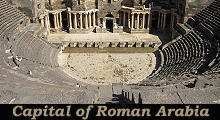 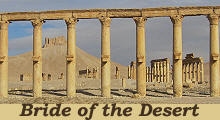 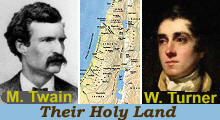 |
